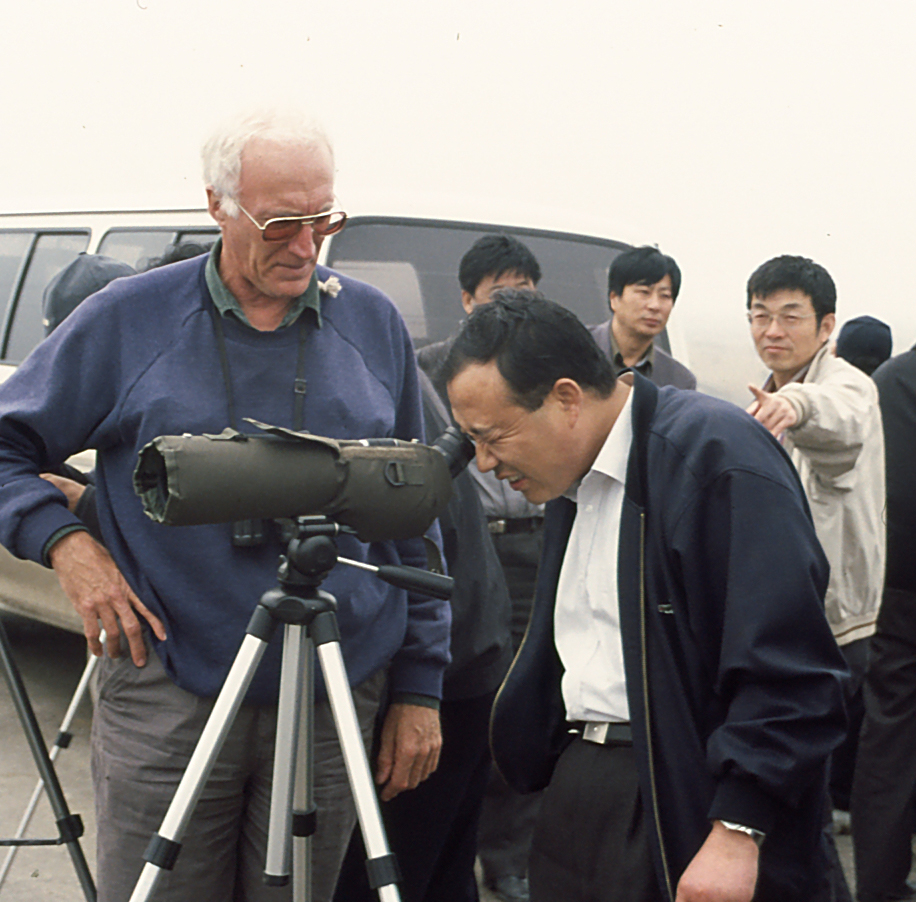1979
A small group known as the ‘Miranda Banders’ led by Dick Veitch began shorebird banding at Pūkorokoro Miranda. Red knots banded in 1980 were subsequently recovered on Sakhalin Island, the Sea of Okhotsk, West Papua and Australia, confirming New Zealand links with Asia.
1986

In 1986 Adrian Riegen and Stephen Davies took over banding activities, and in 1993 formed the New Zealand Wader Studies Group (NZWSG). As more band recoveries from Asia were recorded and more staging sites were discovered, Riegen was in regular contact with researchers in other countries. Many early reports came from Australian-based Mark Barter, who had been surveying the Chinese coast for some years.
1993
At a Japan–Australia Migratory Bird Agreement (JAMBA) meeting in Tokyo in November 1993 attended by Doug Watkins and Karen Weaver from the Australian Department of Environment and Heritage, it was agreed to raise the issue of migratory waterbirds at the December Conference of Parties (CoP) Contracting to Ramsar at Kushiro, Japan. Until this stage two NGOs – the Australasian Wader Studies Group (AWSG) and the Asian Wetland Bureau (AWB), both of which had been monitoring shorebirds in Australia and East Asia since the early 1980s, had been unable to get governments working on a cooperative flyway agenda. At Kushiro it was agreed that a workshop should be held, also at Kushiro, in December 1994 to discuss the issues and develop the Asia – Pacific Migratory Waterbird Strategy and Action Plans.
1994
The Kushiro Shorebird Workshop in December 1994 was attended by government and NGO groups from all but one of the 22 countries and territories on what was to become known as the East Asian-Australasian Flyway (EAAF). New Zealand was the only flyway country not represented at government level, PMNT Council member Adrian Riegen being our sole representative. A plan to form a network of shorebird reserves sites was launched at the meeting, and Doug Watkins (Wetlands International, Canberra) was appointed Flyway officer to oversee the identification and nomination of sites.
1996
A conference hosted by the AWSG in conjunction with the Ramsar CoP in Brisbane in 1996, ratified the EAASN. It was to be modelled on the lines of the Western Hemisphere Shorebird Reserve Network (WHSRN) in North and South America. Sites were to be selected using the Ramsar Convention on Wetlands criteria: that they regularly support 20,000+ birds, or a minimum 1% of a total flyway population. Sites were to be jointly managed by government agencies and local community groups. New Zealand signed up to the Shorebird Site Network (SSN) and designated two Ramsar sites – Farewell Spit and the Firth of Thames for the network. Adrian Riegen and Keith Woodley represented PMNT at the meeting.
1997
The Hon Nick Smith, Minister of Conservation launched the Firth of Thames site on 16 March 1997 with the Pukorokoro Miranda Naturalists’ Trust as the local community group partner.
1999
In April Riegen spent three weeks with a Queensland Wader Study Group expedition to the Gulf of Carpentaria in northern Queensland, monitoring and counting shorebirds migrating north. The region was thought to be a refuelling site for red knots from New Zealand during northward migration and some banded birds from New Zealand were seen.
Next Page: Timeline 2000-2010 –>
